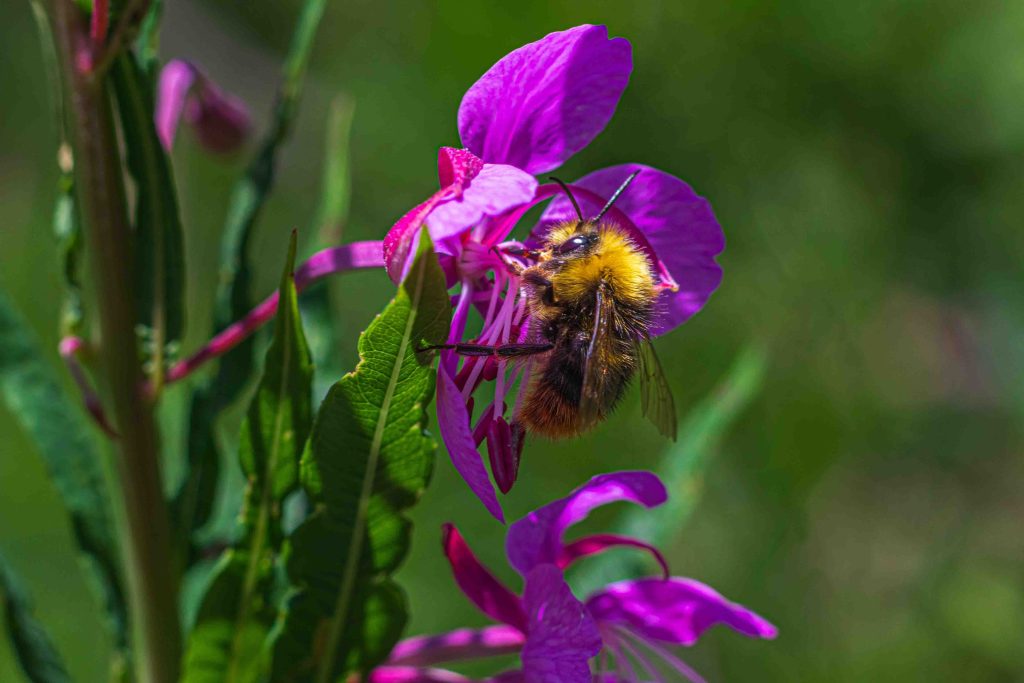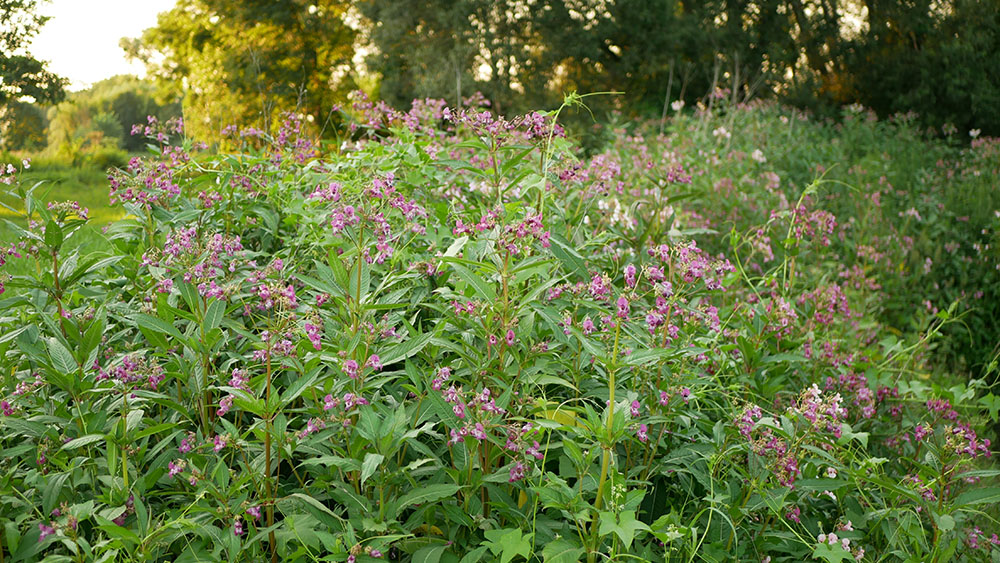How to get rid of Himalayan Balsam
Are you looking into how to get rid of Himalayan Balsam? Here at Endrick Environmental, we have written this comprehensive article with lots of useful information on this invasive species that inhabits the UK.
What is Himalayan Balsam?
Himalayan Balsam is an invasive plant species that poses challenges to local ecosystems. This plant originates from the Himalayan region of Asia, where it grows naturally. In the UK, it has established itself and spread rapidly. Himalayan Balsam has tall, hollow stems that can reach heights of up to 2.5 meters. Its flowers are distinctive, with bright pink petals that attract attention during the blooming season.

Why is it a problem in the UK?
Himalayan Balsam threatens the health of local ecosystems in several ways. It aggressively outcompetes native plants for space, sunlight, and nutrients. This competition leads to reduced biodiversity, as native species struggle to survive. Additionally, the dense growth of Himalayan Balsam can cause soil erosion along riverbanks. When it dies back in winter, it leaves the soil exposed, increasing the risk of erosion during heavy rains. The plant’s presence can also alter water flow in streams and rivers, which can impact aquatic habitats.
Below is an informative video about Himalayan Balsam from the Gloucester Wildlife Trust and how they are tackling it…
Understanding Himalayan Balsam
You can recognise Himalayan Balsam by its striking pink flowers, which bloom from June to September. The flowers are not only beautiful but also play a role in attracting pollinators. And this in turn is a problem. It takes our pollinators away from our native plant species, exacerbating the issue. After flowering, the plant produces seed pods that can explode when ripe. This mechanism disperses seeds over a wide area, allowing the plant to spread rapidly. Each plant can produce thousands of seeds, contributing to its invasion of new areas. This ability to spread quickly increases its negative impact on local habitats, making management more challenging.

Where to find Himalayan Balsam
You can find Himalayan Balsam in various damp areas. It often thrives along riverbanks, streams, and wetlands, where the soil is moist. You may also encounter it in parks, gardens, and other green spaces. The plant prefers shaded or partially shaded locations, which help it grow successfully. Keep an eye out for its tall stems and pink flowers during the summer months.

How does Himalayan Balsam grow and spread?
Himalayan Balsam is known for its rapid growth. It can reach its full height in just one growing season, making it a formidable competitor. The plant spreads primarily through its seeds, which can travel several meters when the pods burst. Each plant can produce thousands of seeds, which increases the chances of establishing new plants in nearby areas. These seeds can remain viable in the soil for several years, making control efforts more difficult.
How to get rid of Himalayan Balsam in the UK
Effective control of Himalayan Balsam requires a combination of methods. Mechanical removal is one of the most effective strategies. You should pull the plants out by their roots before they have a chance to seed. This can be done in late spring or early summer when the plants are still young. Make sure to dispose of the removed plants properly to prevent regrowth. Herbicides can also be an option. Apply systemic herbicides during the growing season, particularly in late spring or early summer. Always follow the manufacturer’s instructions for application to ensure effectiveness and safety.
Why do we treat Himalayan Balsam?
Treating Himalayan Balsam is essential to restoring local ecosystems. When you remove this invasive plant, you create space for native plants to thrive. This, in turn, improves biodiversity in affected areas. Healthy ecosystems support a wider range of wildlife, contributing to a balanced environment. By taking action, you can help ensure that local habitats remain diverse and resilient.

The Challenge ahead – Himalayan Balsam management
Controlling Himalayan Balsam presents several challenges. The plant can quickly return even after removal efforts, making persistence key. Regular monitoring of affected areas is essential to catch any new growth early. You may need to repeat removal methods multiple times to achieve long-term success. Staying vigilant and committed is crucial in the fight against this invasive species.
Controlling Himalayan Balsam together
Collaboration is vital in tackling the issue of Himalayan Balsam. Engage with local community groups to share knowledge and strategies. Organise removal events where volunteers can come together to help. Sharing information and resources can enhance your efforts. Your involvement can significantly impact the preservation of local habitats. What specific actions will you take to help control Himalayan Balsam in your area?

Get in touch and let us help
Here at Endrick Environmental, we specialise in the management of a variety of invasive species. And with many years of experience under our belt, we have great success rates. If you need help on how to get rid of Himalayan Balsam, then get in touch with us today, and we will be happy to help.
